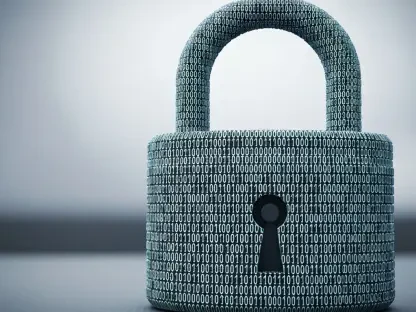The emergence of new ransomware groups exploiting software vulnerabilities has ramped up cybersecurity challenges for organizations worldwide. Among these, EstateRansomware stands out for its sophisticated maneuvers, targeting weaknesses in widely-used software. Such groups are getting increasingly adept at outmaneuvering traditional security defenses, making the understanding of their tactics and preparing networks against these threats crucial for maintaining robust cybersecurity defenses. As ransomware attacks continue to proliferate, adopting a proactive stance in identifying and mitigating vulnerabilities is imperative for safeguarding sensitive data and ensuring operational continuity.
Understanding EstateRansomware’s Modus Operandi
EstateRansomware employs a detailed and multi-phase attack chain, starting from gaining an initial foothold in the target network. The group often leverages unpatched vulnerabilities in software and hardware to infiltrate systems. For instance, they exploited Fortinet FortiGate firewall’s SSL VPN service to gain unauthorized access using a dormant account labeled ‘Acc1.’ This initial compromise underscores the importance of regularly updating software and methods to continuously monitor network access points to prevent unauthorized entry.Once inside, EstateRansomware establishes persistence through methods such as setting up Remote Desktop Protocol (RDP) connections from the compromised firewall to internal servers. Establishing backdoors, like ‘svchost.exe,’ executed via scheduled tasks, allows these attackers to maintain long-term access without detection. This highlights the need for vigilance in monitoring scheduled tasks and unusual processes within the network. Automated threat detection systems and rigorous log management can detect unauthorized RDP connections early, thereby thwarting potential escalation and subsequent stages of an attack.
Exploiting Vulnerabilities in Veeam Backup Software
A significant chapter in EstateRansomware’s strategy involves leveraging specific vulnerabilities, such as the recently exposed flaw in Veeam Backup & Replication software, tracked as CVE-2023-27532. This vulnerability enables attackers to gain unauthorized control of the backup server, facilitating network discovery and credential harvesting. Attackers employ tools like NetScan, AdFind, and NitSoft to meticulously map out the network and zero in on high-value targets. This capacity for deep reconnaissance poses considerable risk to organizational data and operational integrity.Patch management is indispensable in preventing such exploitation. Organizations must prioritize applying security patches promptly upon their release to close down pathways for potential attacks. Additionally, deploying robust monitoring systems to detect and respond to abnormal activities can prevent attackers from capitalizing on known vulnerabilities. Educating the IT team on timely patching protocols and fostering a culture of vigilance around cybersecurity updates are steps that can fortify defenses against exploitation attempts lingering around untended vulnerabilities.
Persistent Backdoors and Lateral Movement
Maintaining access through persistent backdoors is essential for EstateRansomware, enabling continuous reconnaissance and expansion within the network. By creating rogue user accounts and utilizing tools like PsExec.exe, attackers can seamlessly move laterally across the compromised network sectors, thus compromising critical servers and workstations. These rogue accounts and scripted maneuvers facilitate the steady build-up of an attack vector designed to deliver significant interference and damage.Network segmentation and robust access controls serve as effective defenses against such lateral movements. Limiting user privileges, implementing multi-factor authentication, and segregating network zones can significantly hamper the progress of an attack, minimizing its impact. Regular audits and behavior-based detection tools can also play a crucial role in identifying and eliminating persistent threats before they cause extensive damage. Monitoring for any deviation from normal behavior, coupled with swift containment measures, can prevent an isolated breach from escalating into a full-scale network compromise.
Ransomware Deployment and Defense Evasion
In the final stages of their attack, EstateRansomware disables endpoint defenses and deploys the ransomware payload, leading to widespread encryption of files. For instance, disabling Windows Defender with tools like DC.exe and using PsExec.exe for distribution illustrate the attackers’ focus on neutralizing security measures. This phase typically culminates in the crippling of vital network infrastructure through paralyzing encryptions that can bring operations to a grinding halt—posing existential risks to the business functionality and reputational standing.Investing in comprehensive endpoint security solutions that include advanced threat detection capabilities is vital for early detection and mitigation. Educating employees on cybersecurity best practices and conducting regular training can further strengthen defenses, ensuring that human errors do not provide adversaries with easy entry points. Instituting a culture of cybersecurity awareness, where employees understand their critical role in maintaining security postures, can serve as an invaluable fortification against such intrusions.
Double Extortion Tactics and Data Protection
Double extortion, where data is exfiltrated before encryption, has become a favored tactic among ransomware groups, including EstateRansomware. This method involves exfiltrating sensitive data and threatening to expose it if ransoms aren’t paid, effectively increasing the pressure on victims. Organizations must bolster their data protection strategies to counter this dual threat effectively. Implementing encryption for sensitive data both at rest and in transit can limit the impact of data breaches, making exfiltrated data less valuable to attackers.Regular backups and a well-defined incident response plan are critical in enabling organizations to recover swiftly from ransomware incidents without succumbing to ransom demands. Ensuring backups are stored securely and disconnected from the primary network prevents attackers from compromising these critical recovery options. A resilient backup strategy and adherence to best practices in data protection, including regular verification of backup integrity, can serve as effective countermeasures against data exfiltration threats, ensuring business continuity even in adverse situations.
Cybersecurity Best Practices Against Emerging Threats
The rise of new ransomware groups exploiting software vulnerabilities has significantly heightened cybersecurity challenges for organizations globally. EstateRansomware, in particular, distinguishes itself through its advanced tactics, specifically targeting weaknesses in widely-used software systems. These groups are becoming increasingly skilled at evading traditional security defenses, making it vital to comprehend their strategies and fortify networks accordingly. As ransomware incidents continue to escalate, it is imperative to adopt a proactive approach in identifying and addressing vulnerabilities. This proactive stance is essential for protecting sensitive data and ensuring seamless operational continuity.In an era where ransomware attacks are proliferating, understanding the nuances of these threats and crafting robust security measures becomes vital. Organizations must prioritize regular security assessments, employee training, and investment in advanced cybersecurity technologies. Collaborating with cybersecurity experts and staying updated with the latest threat intelligence are also crucial steps. By integrating these practices, businesses can better safeguard their assets and maintain a strong defensive posture against the ever-evolving landscape of ransomware threats.









